The Ritual of Arriving at BRAG Camp
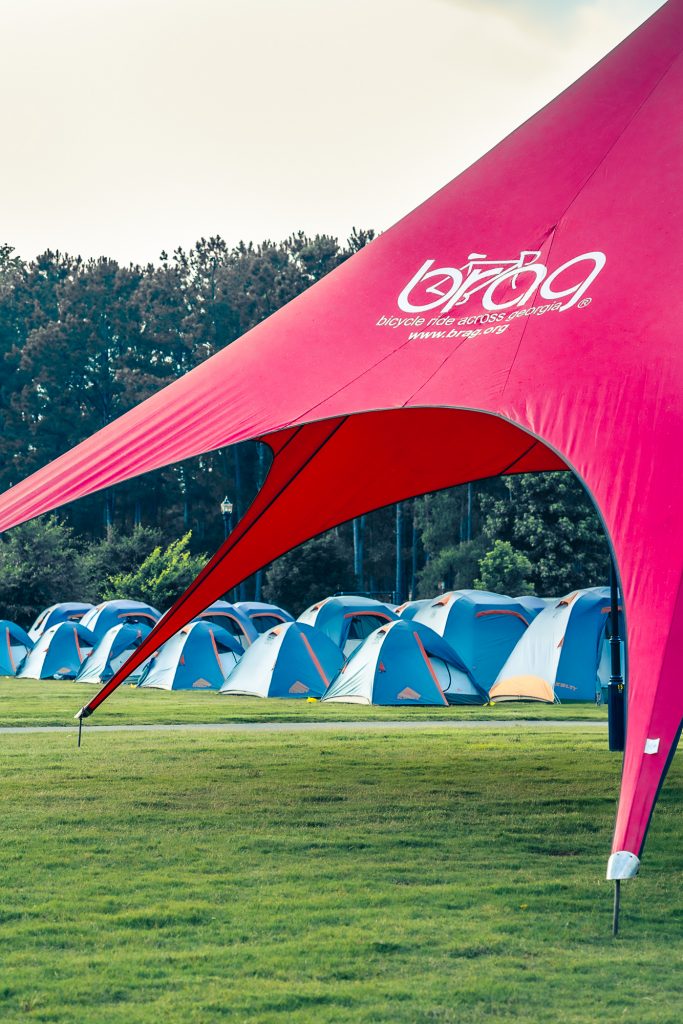
There’s a moment every afternoon on Big BRAG when the day’s miles finally catch up with you. Your legs have that pleasant heaviness that comes from a good long ride. The sun has shifted lower in the sky. You’ve cycled through small-town Georgia, past farmland and forests, maybe climbed a few hills that seemed steeper than the elevation profile suggested. And then, just when you’re ready to be done, you spot it: the telltale signs of camp.
First, you see BRAG’s familiar Big Red tent. Then the equipment trailers and UHauls beginning to dot the landscape. Other cyclists dismounting, unclipping, and walking their bikes with that particular gait of someone who’s been in the saddle for hours. The faint sounds of activity and conversation drifting on the breeze.
You’ve arrived at tonight’s host town. And the beautiful ritual of Big BRAG camp life is about to begin.
The Geography of Camp
Big BRAG partners with Georgia communities who open their hearts—and their facilities—to welcome some 1,000 cyclists for a night. The result is a distinctly authentic experience that no one can replicate.
Camp locations vary by town but share common characteristics. Most often, you’ll find yourself at a local high school or community center, where sprawling athletic fields, parking lots, and facilities become your temporary home. The luggage trucks have already arrived, and your gear—sent ahead that morning—sits waiting in neat rows, ready for retrieval.
The setup offers flexibility for different camping preferences and needs. Some riders prefer the traditional outdoor camping experience, pitching tents in fields under Georgia’s summer sky. Or maybe taking advantage of VIP tent service from Padre’s Cycle Inn. Others opt for indoor camping in school gymnasiums or auditoriums, where climate control and hard floors provide a different kind of comfort. Both options are available at BRAG registration, so you can choose based on your personal preference.
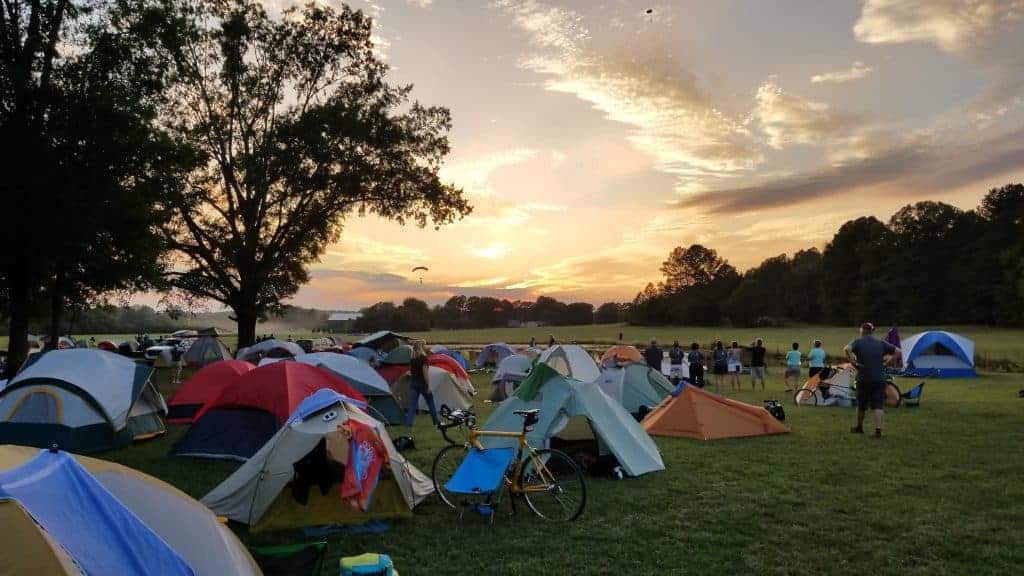
The First Priority: Finding Your Luggage
After finishing your ride at camp, the first order of business is locating your luggage.
There’s something deeply satisfying about this moment. You’ve been carrying minimal supplies on your bike all day—maybe a spare tube, some snacks, your phone. Everything else—clean clothes, toiletries, your book, your camping gear—has been traveling separately, and now you’re reunited. It’s a small thing, but after 50 or 60 miles of cycling, small comforts matter enormously.
BRAG’s baggage system is elegantly simple: each rider is allowed two bags up to 50 pounds each (though honestly, 100 pounds of luggage is probably excessive for a week where BRAG takes care of basic creature comforts). The bags come off the truck in neat, tidy rows—lined up for riders to claim. This is where packing strategy matters: keep your bags as compact as possible, and add some distinctive flair to make yours stand out. A bright-colored strap, unique luggage tag, or distinctive pattern helps you quickly spot your duffel among hundreds of similar bags.
With luggage in hand, you stake your claim. Outdoor campers find a spot on the field with good drainage and maybe some shade, but definitely far from a sprinkler head. Indoor campers select their square of gymnasium floor, often near friends they’ve made during previous days of riding. There’s an art to choosing your spot—not too close to the bathrooms (traffic), not too far from the bathrooms (inconvenience), ideally near compatible neighbors who share your sleep schedule and noise tolerance.
The Settling-In Ritual
What happens next is personal and varies by rider, but certain patterns emerge. Almost everyone immediately changes out of cycling clothes. Even if you’re not showering right away, simply removing padded shorts and sweaty jerseys feels like shedding the day’s efforts. Flip-flops or comfortable sneakers replace cycling cleats. The transformation from cyclist to camper begins.
Many riders prioritize showering—BRAG’s mobile shower trucks with hot water follow the tour from town to town, providing the essential luxury of a proper rinse after miles in the saddle. These shower trailers are the heart of camp comfort, with multiple shower stalls serving riders throughout the evening. Indoor campers may have access to a few school locker room showers as well, but most riders rely on the shower trucks. Nothing quite matches that feeling of washing away road dust and sweat under hot water. Some shower immediately upon arrival, while others prefer waiting until their bodies have cooled down and stopped sweating. There’s no wrong approach!
With basic comfort achieved, riders have choices. This is where Big BRAG’s camp life truly shines as you’re free to create your own experience.
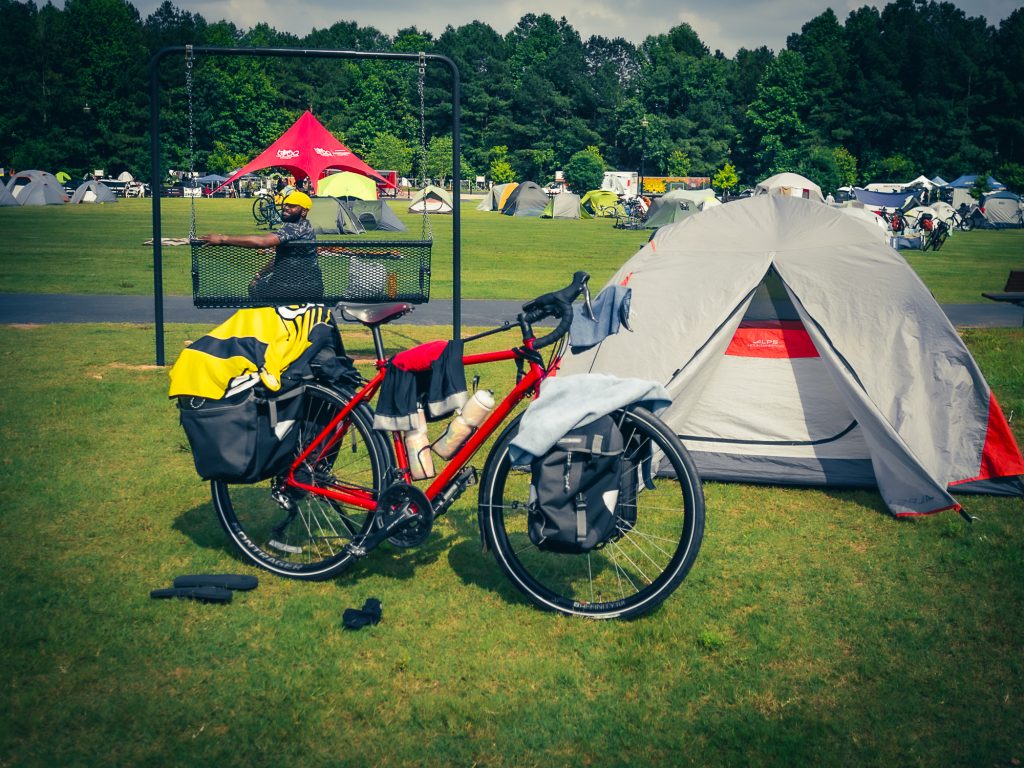
The Social Hub: Food, Music, and Community
As evening approaches, camp comes alive with activity centered around food and entertainment. One of Big BRAG’s most beloved traditions is the presence of food trucks offering diverse cuisines that showcase Georgia’s culinary variety. After burning thousands of calories on the bike, these mobile kitchens become pilgrimage destinations.
The food truck lineup changes with each host town. You might find classic Southern barbecue one night, gourmet tacos the next, wood-fired pizza, Asian fusion, or regional specialties. The options accommodate various dietary preferences, and the casual outdoor dining atmosphere encourages conversation and connection.
But food is only part of the equation. As you eat, live music fills the air—local bands showcasing Georgia’s diverse musical talent. The genres vary: bluegrass, rock, country, folk, sometimes funk or jazz. The quality consistently impresses, because Georgia towns take pride in presenting their best to BRAG visitors. These aren’t perfunctory performances; they’re genuine celebrations of local culture and hospitality.
Café Campesino, Georgia’s fair-trade, organic coffee roaster based in Americus, provides another essential camp service. Their coffee bar serves both hot coffee and their famous iced mochas throughout the evening, giving riders a caffeine boost for socializing or providing a comforting ritual before bed. Many riders discover Café Campesino on their first BRAG and continue ordering it year after year, the flavor becoming forever associated with cycling memories across Georgia.
Sitting on the grass or at provided picnic tables, eating good food, listening to live music, sipping on something from the BRAG Bar, and swapping stories about the day’s ride creates the social glue that transforms 2,000 individual cyclists into a genuine community. You’ll reconnect with friends made earlier in the week, meet new people drawn together by shared experiences, and feel the particular contentment that comes from physical exertion followed by satisfying rest.
The Town Connection
Big BRAG’s camp experience is deeply enriched by host town participation. Local representatives and residents don’t just tolerate this annual influx of cyclists—they enthusiastically welcome riders, creating an atmosphere of authentic Southern hospitality.
Town representatives often attend evening gatherings, welcoming riders and sharing information about their community’s history, attractions, and local pride. These aren’t formal presentations but genuine invitations to engage with the town beyond the campground. You’ll learn about local industries, historical significance, upcoming festivals, and the stories that make each Georgia town unique.
Many host towns provide shuttles into downtown areas, recognizing that after a day on the bike, not everyone wants to pedal additional miles to explore local restaurants, shops, or historic sites. These shuttles—often school buses or community vehicles operated by volunteers—run regular routes throughout the evening, making town exploration accessible and convenient.
Some riders enthusiastically take advantage of these shuttles, venturing into downtown to experience local restaurants, visit historical sites, browse shops, or simply walk around absorbing small-town Georgia atmosphere. Others prefer staying at camp, perfectly content with food trucks and the social scene. Both choices are equally valid, and the flexibility to choose based on your energy level and interests is part of what makes Big BRAG special.
The town-rider relationship goes beyond logistics. Local citizens often visit camp out of genuine curiosity and friendliness. You might chat with a local who remembers previous BRAG visits, or someone who cycles recreationally and enjoys connecting with touring cyclists. These spontaneous interactions create authentic cultural exchange—you’re not tourists being served by hospitality workers, but guests welcomed into a community for a brief but meaningful visit.
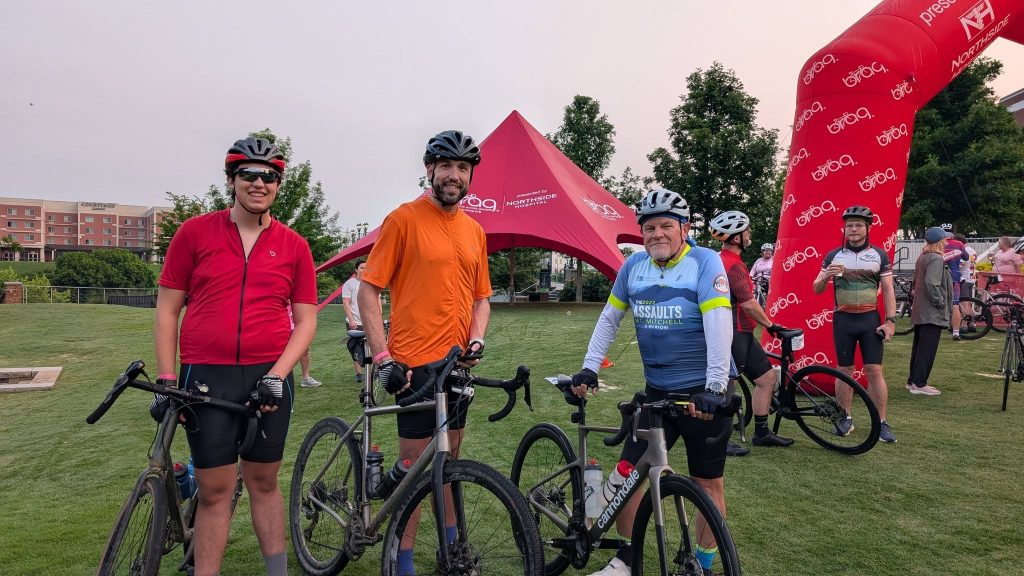
The Many Paths of Evening
As twilight deepens, camp life fragments into countless individual experiences, each valid and valuable:
The Social Butterflies: Some riders are energized by community and conversation. They move through camp visiting different friend groups, participating in impromptu gatherings, and staying up late swapping stories around conversations circles. For them, the evening social scene is as important as the day’s cycling.
The Quiet Retreaters: Others need solitude after a day surrounded by people. They find a quieter corner of camp, perhaps sit against a tree, and decompress with a book, journal, or simply quiet contemplation. The gentle sounds of distant conversation and music provide pleasant background noise without demanding participation.
The Catch-Up Crew: Many riders form small groups during the week—two to six people who naturally gravitate together. Evenings become their time to deepen friendships, comparing notes about the day’s challenges and highlights, sharing personal stories beyond cycling, and building relationships that often extend far beyond the week of BRAG.
The Town Explorers: Adventurous riders use evening hours to genuinely experience host towns. They take shuttles downtown, wander historic districts, find local coffee shops or ice cream parlors, visit museums or historical markers, and collect memories of each community. For them, Big BRAG is as much about discovering Georgia towns as cycling between them.
The Recovery Focused: Some riders prioritize physical recovery, especially mid-week when accumulated miles start demanding respect. They might take an appointment with one of the masseuses, participate in the daily yoga session, or simply lie down earlier than others. Smart recovery ensures they can enjoy the remaining days without burnout or injury.
The Nappers: Never underestimate the appeal of an early evening nap. After 50-60 miles of cycling, the pull of a sleeping bag or air mattress is powerful. Some riders nap early, wake refreshed for the social scene, then sleep again. Others nap and simply drift into full night sleep, their bodies demanding rest above all else.
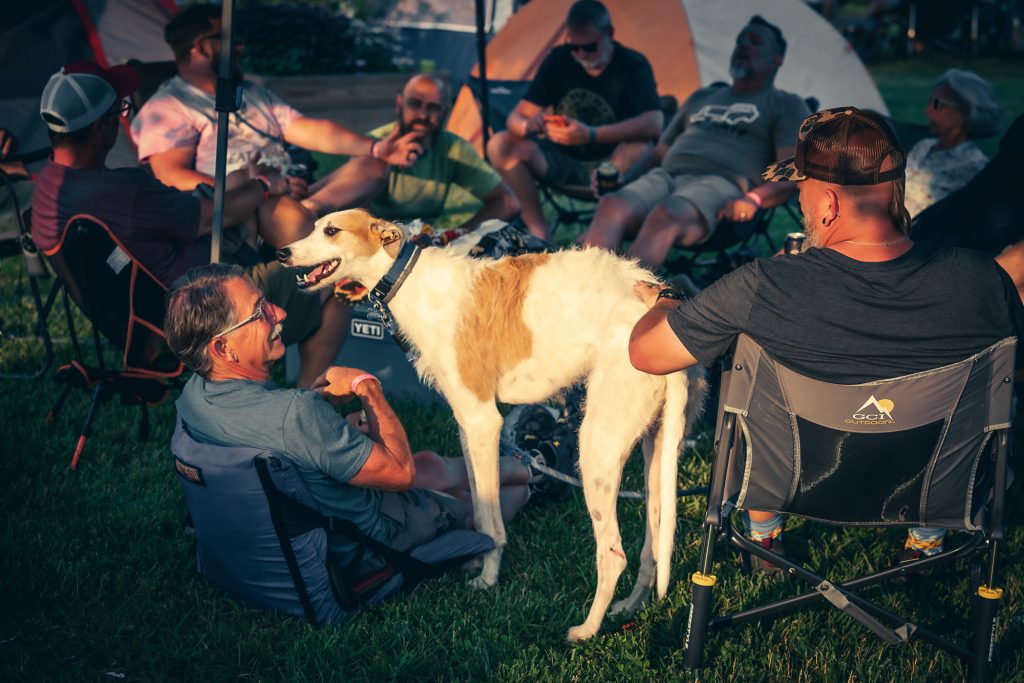
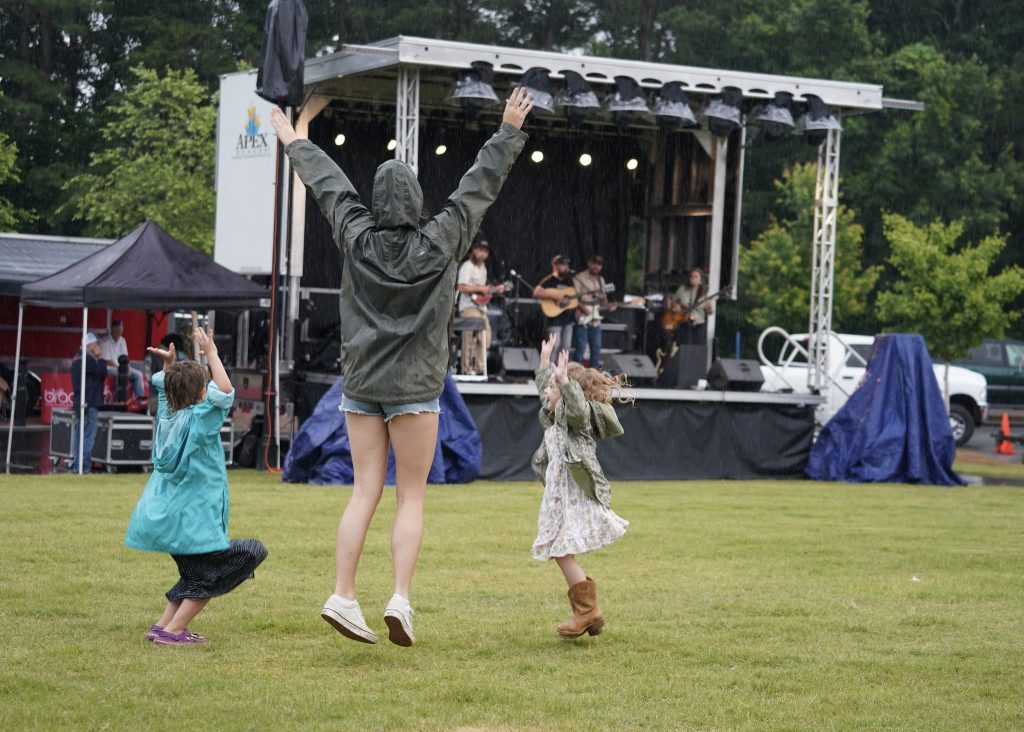
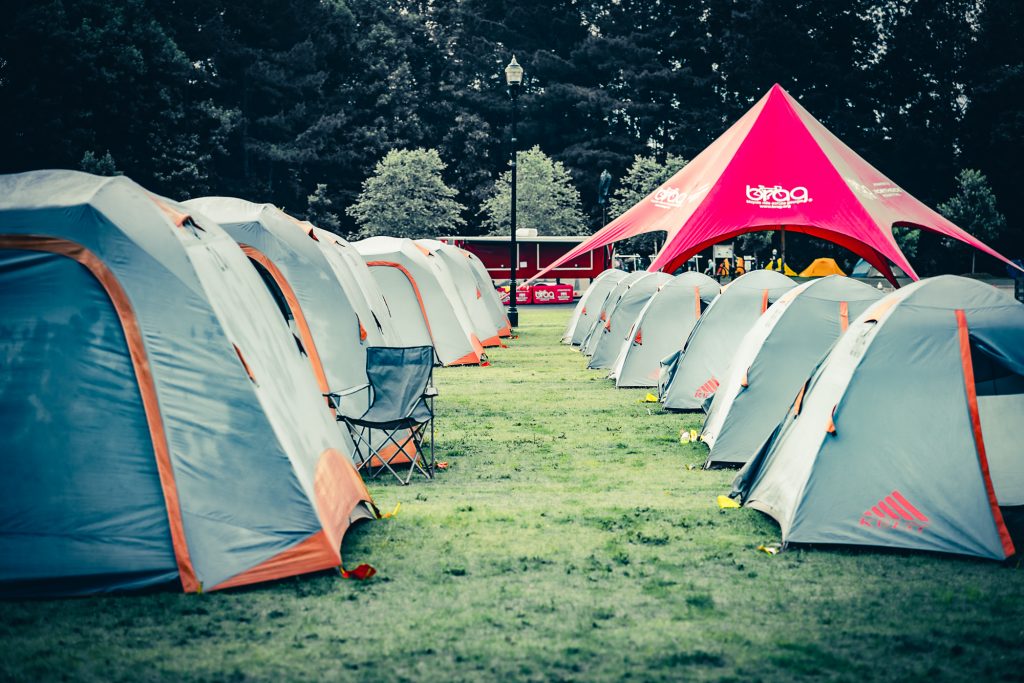
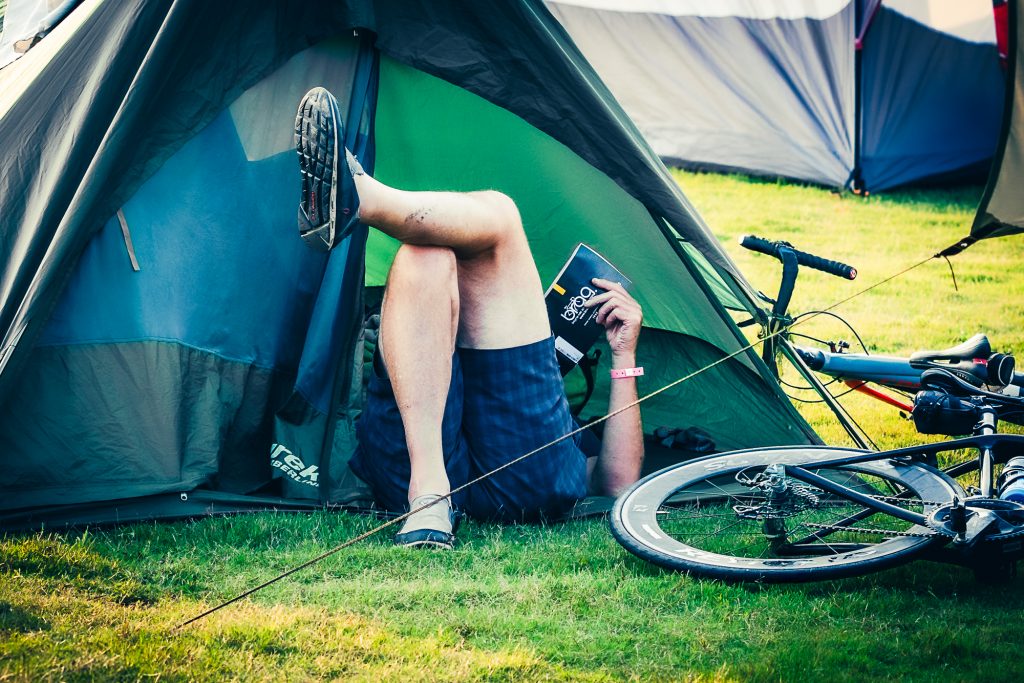
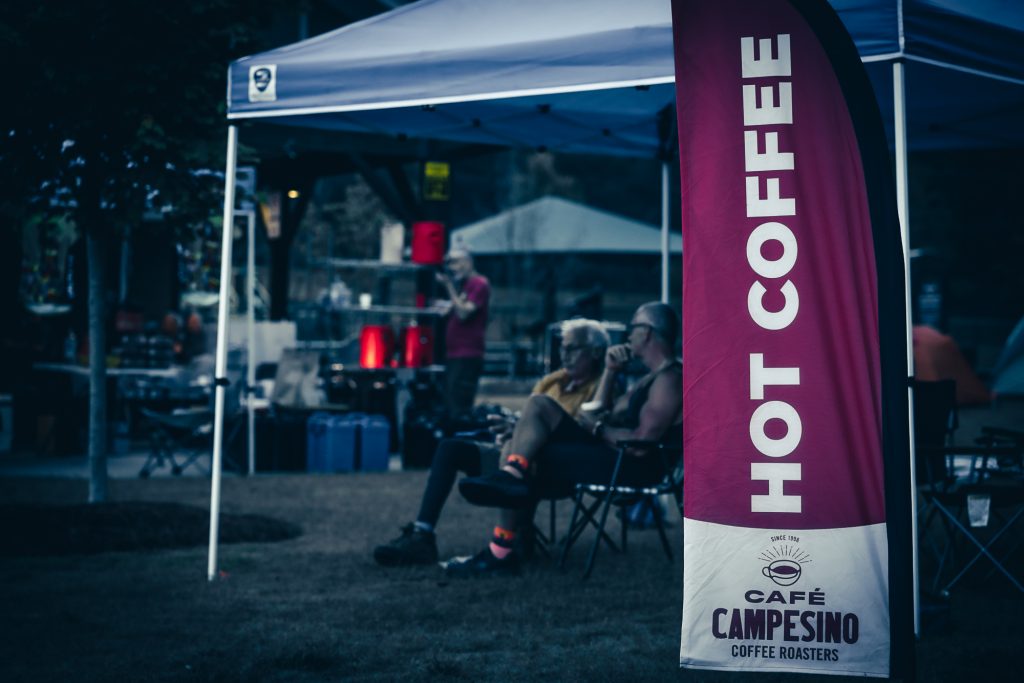
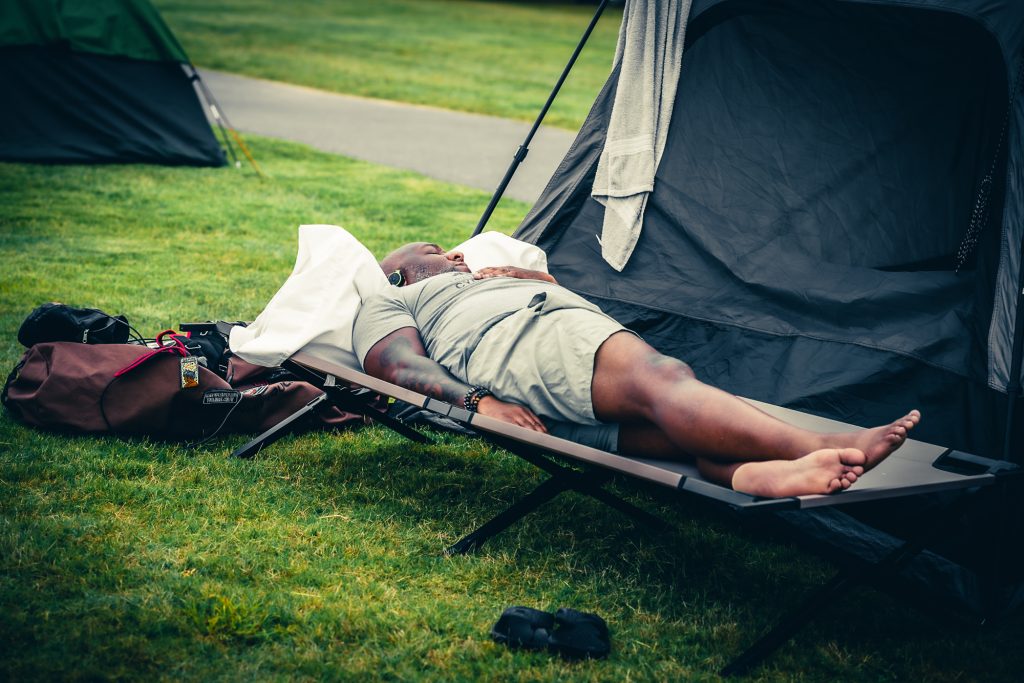
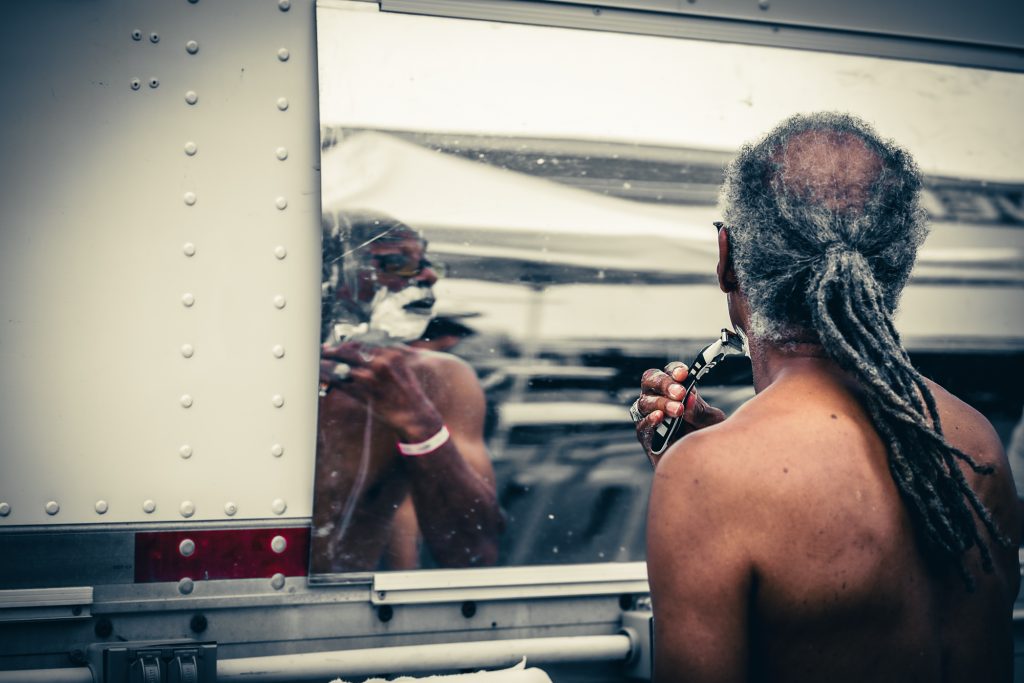
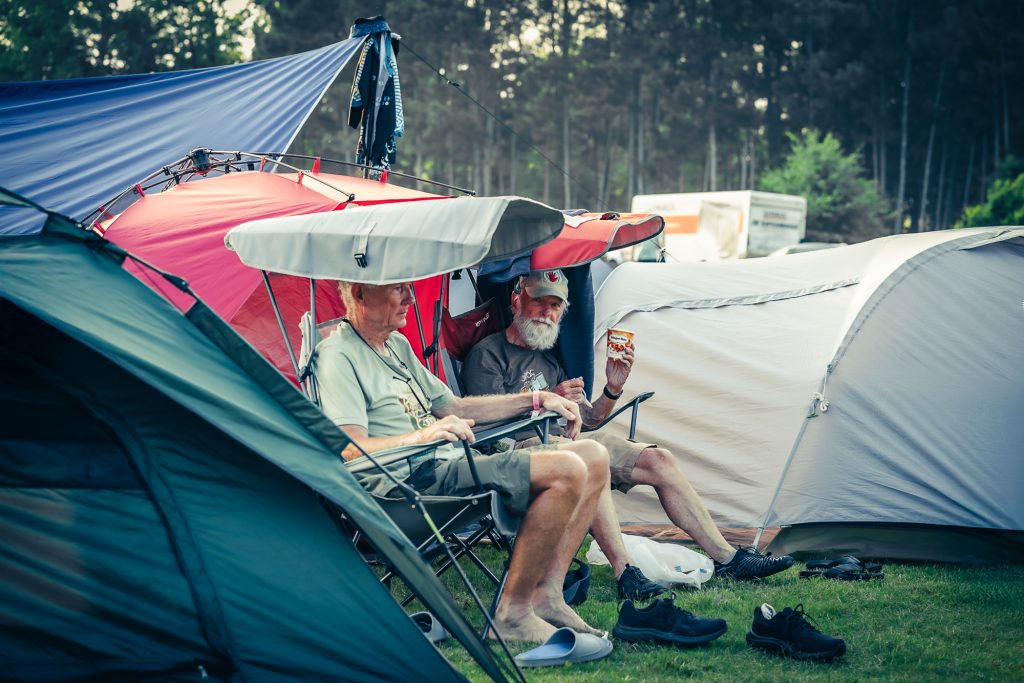
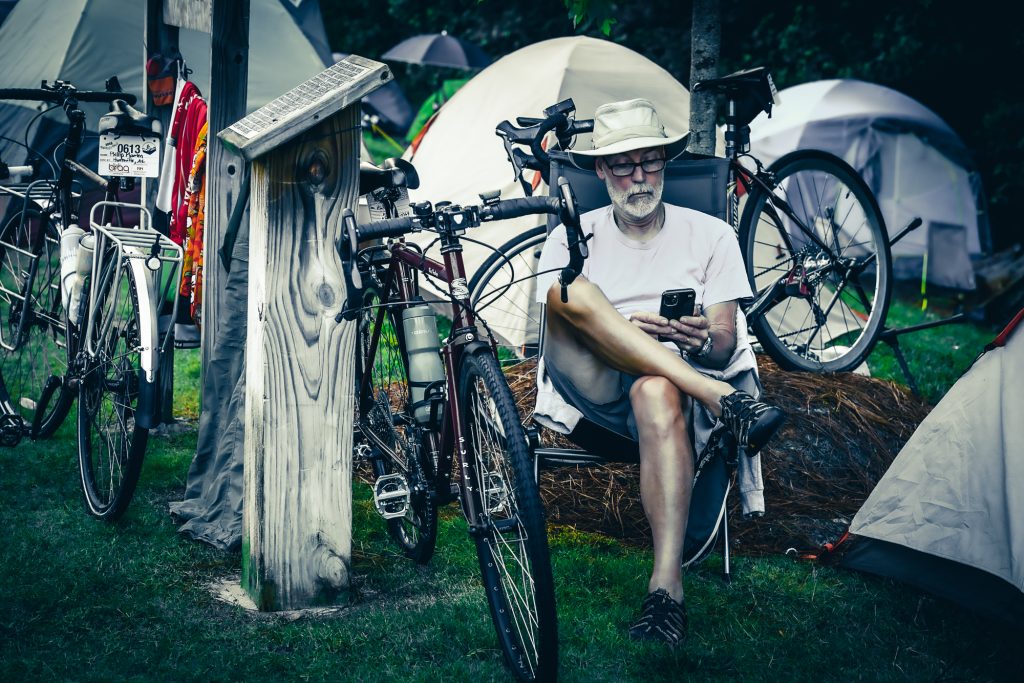
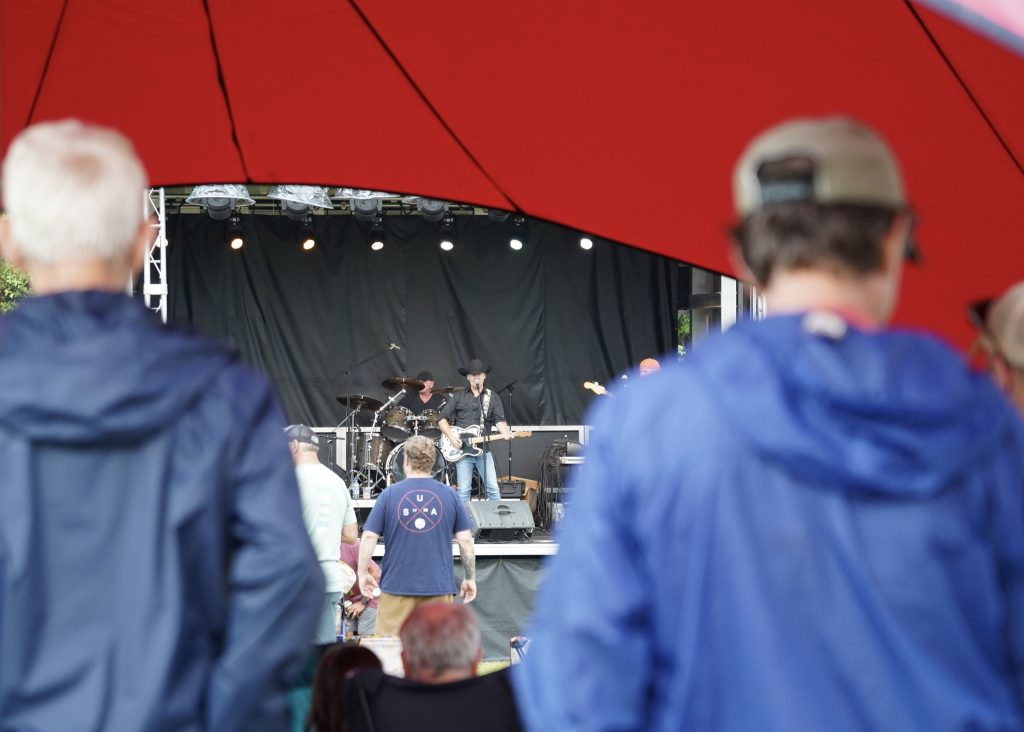
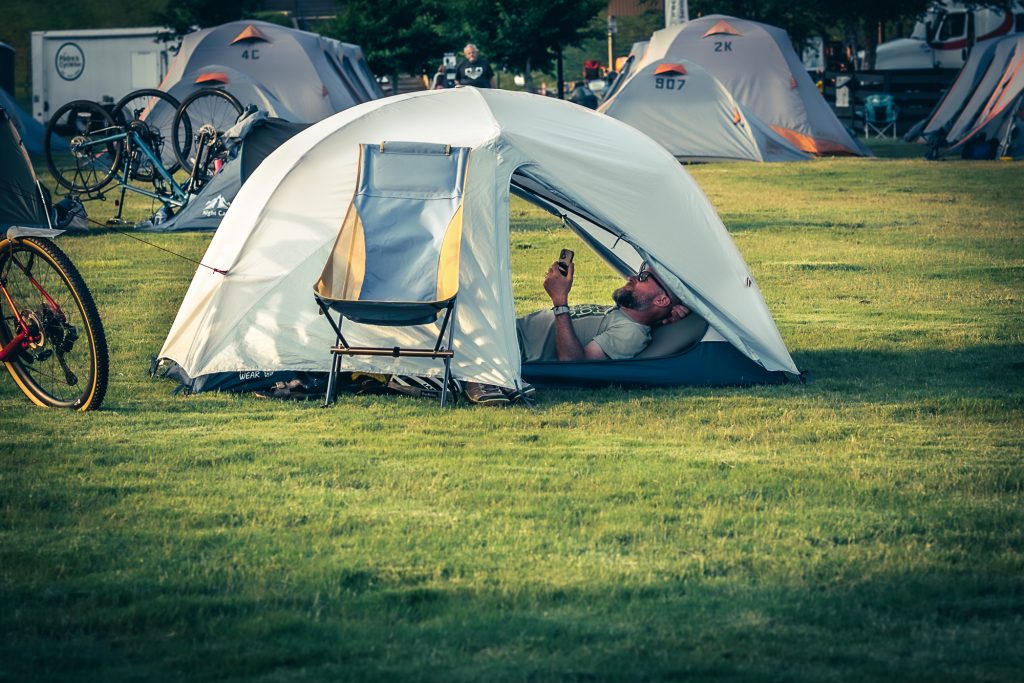
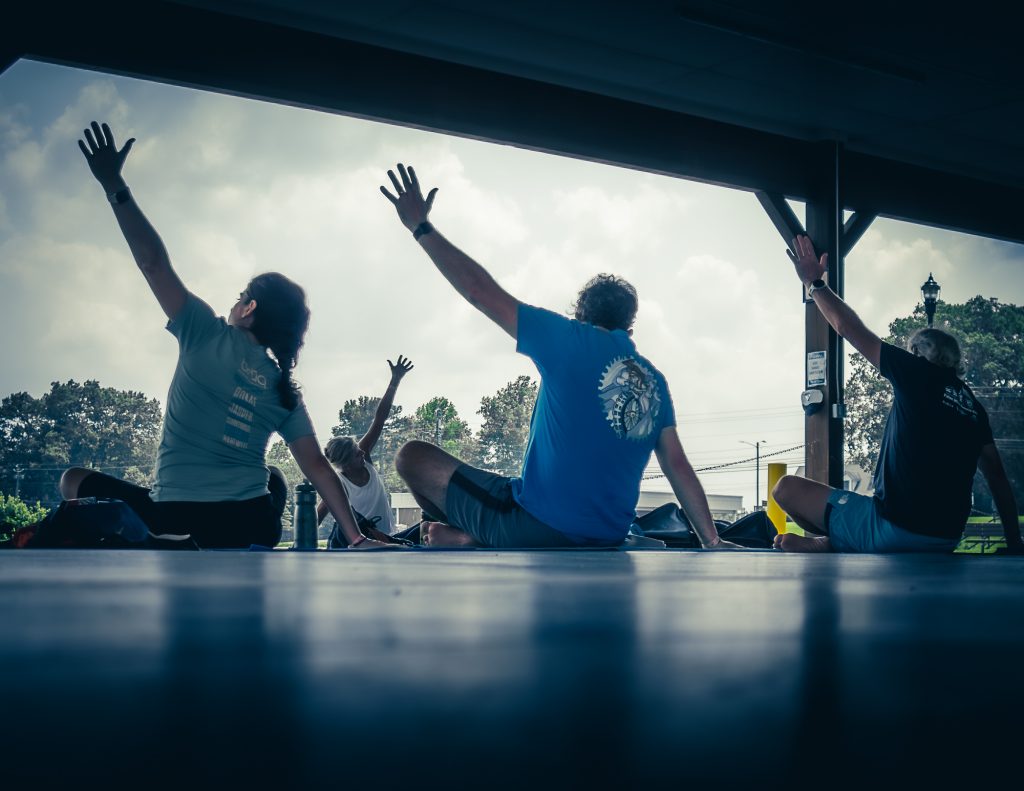
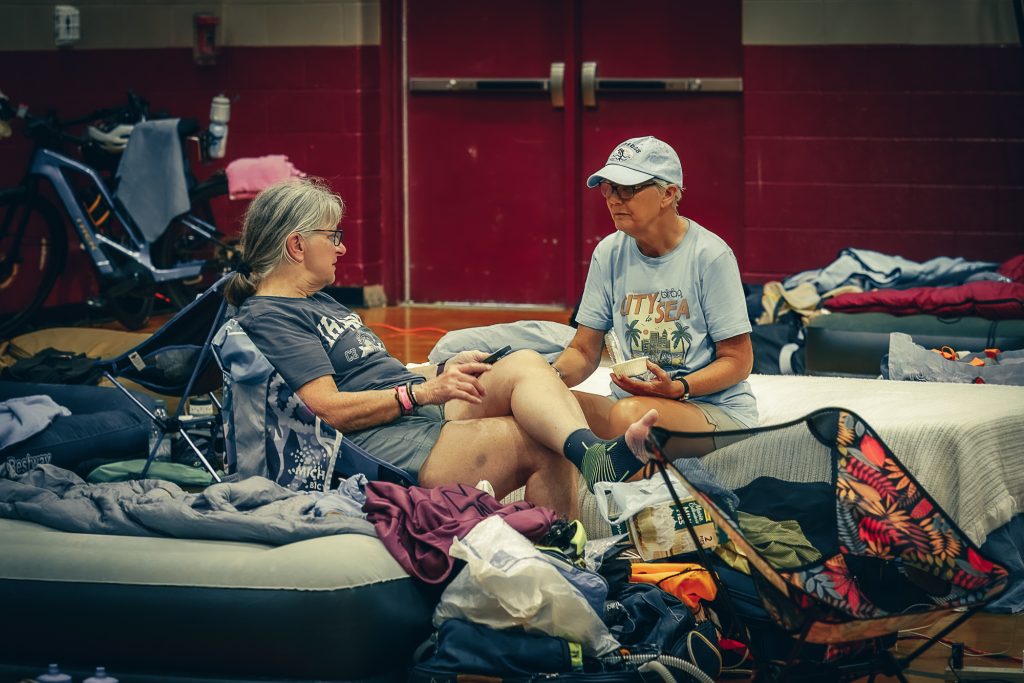
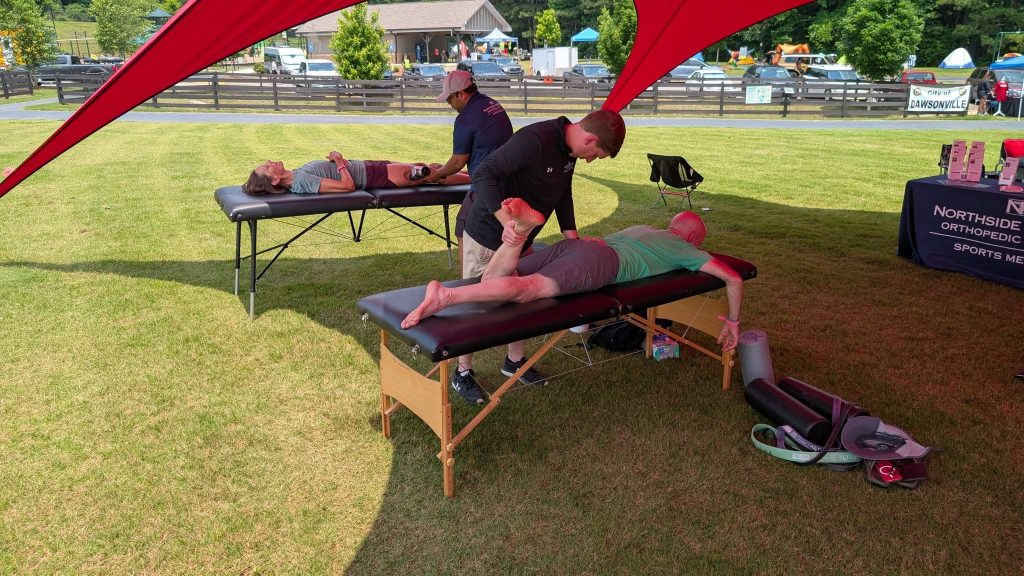
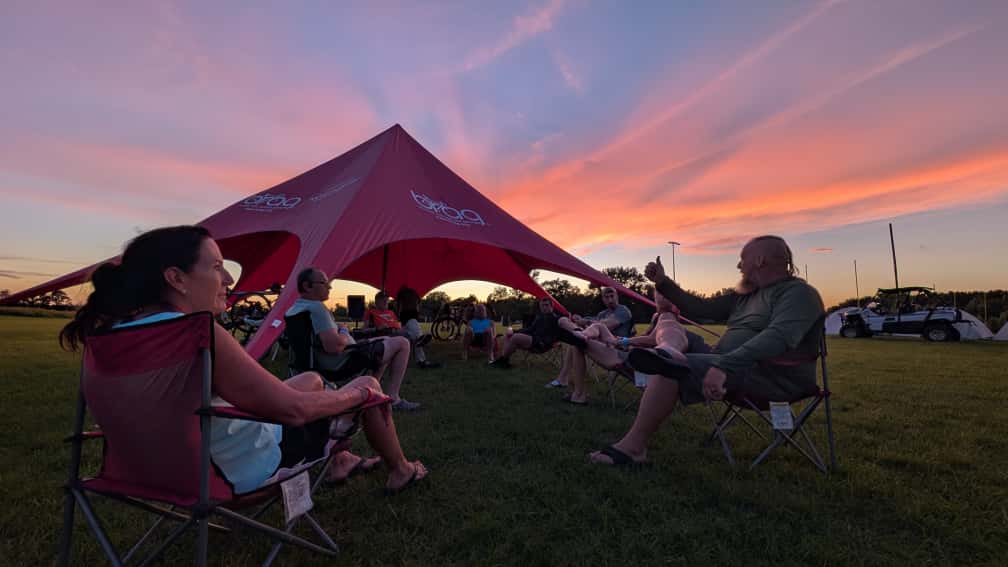
The Reading and Reflection Hour
One of Big BRAG’s quietly beautiful aspects is how many riders bring books. As evening settles in, you’ll see people scattered across camp absorbed in novels, memoirs, or non-fiction. There’s something particularly satisfying about reading after physical exertion—your body is pleasantly tired, your mind is clear from hours of outdoor activity, and the gentle ambient noise of camp provides perfect reading atmosphere.
Some riders journal, documenting their daily experiences, reflections on the route, people they’ve met, or internal thoughts that surface during long hours in the saddle. These journals become treasured keepsakes, capturing not just what happened but how it felt to be fully present in the experience.
Others simply sit, watching camp life unfold around them. The sunset painting the sky. Other cyclists going about their evening rituals. Volunteers cleaning up food service areas. Musicians packing up instruments. There’s a meditative quality to this observation, a peaceful presence that requires nothing of you except being there.
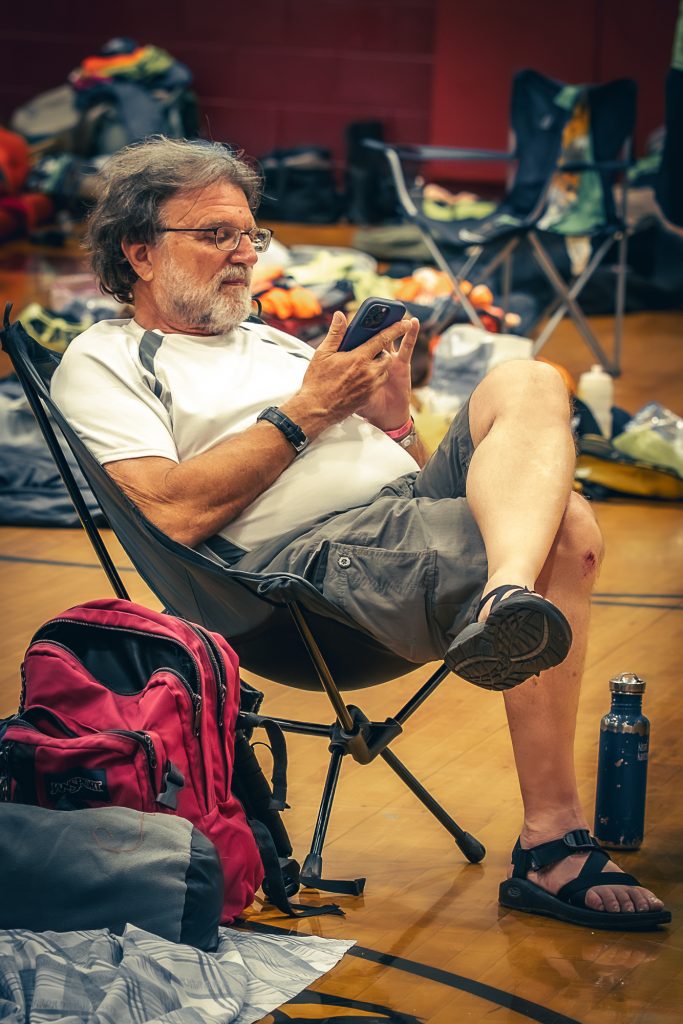
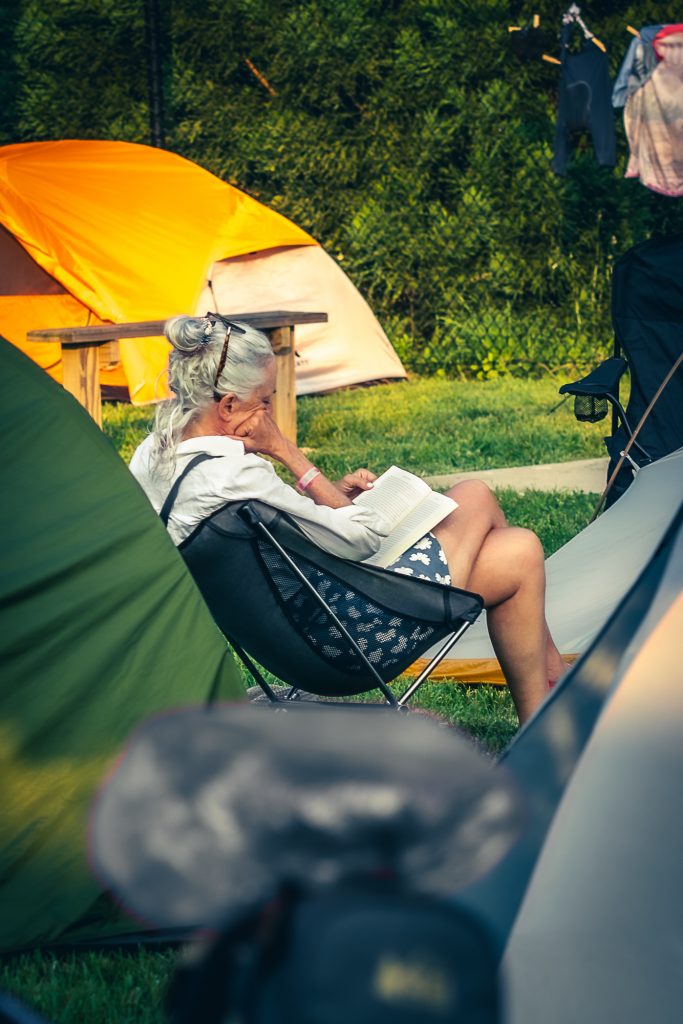
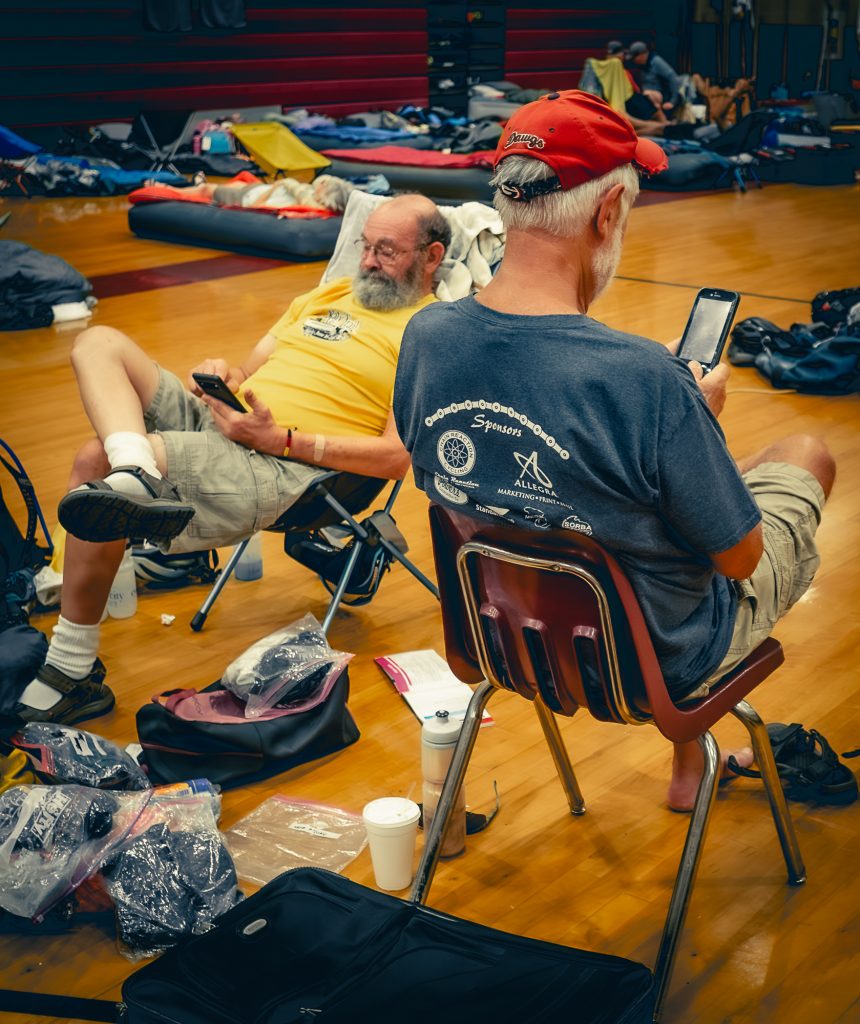
The Practical Realities
Woven through these experiences are the practical necessities of camp life. These practical tasks create rhythm and routine. They’re not chores but part of the experience, woven into the fabric of camp life. They anchor you in the present, requiring attention and care that keeps you engaged with the immediate rather than distracted by distant concerns.
The Matter of Laundry
Laundry strategy varies widely among riders, and there’s no single “right” approach. Some riders pack light—just two cycling kits—washing one in the shower each day and leaving it to dry out while wearing the other kit the next day. It’s minimalist and efficient, though it requires discipline and faith in Georgia’s summer heat to dry everything overnight.
Others pack 3-4 kits and use Wednesday’s layover day to do laundry. Most host towns provide laundry facilities or recommend local laundromats, and the extra time on this mid-week break makes washing and thoroughly drying everything feasible. This is probably the most common approach, balancing light packing with the comfort of truly clean, dry gear.
Then there are the “pack everything” riders who bring 6-7 complete kits, each sealed in its own one-gallon baggie for organization and odor control. They save laundry for the comfort of home, preferring to carry extra weight rather than worry about washing logistics during the ride. With BRAG allowing two bags up to 50 pounds each, this approach is perfectly viable if you don’t mind the bulk.
Bike Mechanics
Bikes need basic maintenance—checking tire pressure, wiping down chains, addressing small mechanical issues before they become problems. Tire pumps are always on-hand at our Red Registration Trailer. Luckily, Aztec Cycles Mobile Repair is on-hand all week long for bigger problems!
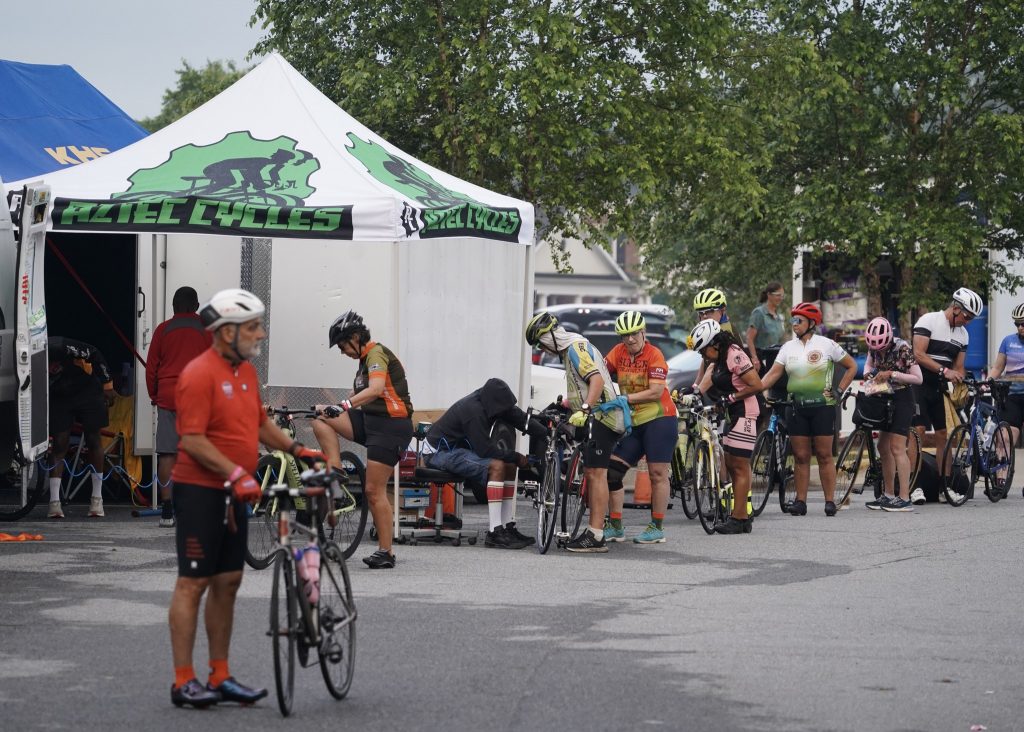
You’ve Got the Power
Deivce charging is an easy answer. Riders seek out the Red Registration Trailer’s charging lockers, setting phones, power banks, lights and GPS computers to charge while they eat or socialize, returning periodically to check progress. Inside campers who bring along power strips make fast friends, allowing others to share single outlets.
Camp Nomms
Meal planning happens too. While food trucks offer breakfast, lunch, and dinner, riders may also pack energy bars and instant oatmeal. Others take advantage of the abundant snacks at rest stops or stop at stores along the route.
Café Campesino, Georgia’s fair-trade, organic coffee roaster based in Americus, GA, provides another essential camp service. Serving hot coffee, Café Campesino gives riders a caffeine boost for the day ahead. They also have cold brew waiting for your afternoon pick-me-up! Many riders discover the BRAG Blend coffee variety on their first BRAG and continue ordering it year after year, the flavor becoming forever associated with cycling memories across Georgia.
The Mid-Week Break
Big BRAG covers over 400 miles during one week across Georgia, and midweek the tour pauses for a two-night stay in one town, Tuesday & Wednesday. This extended stop transforms camp dynamics considerably.
With a full rest day or optional ride (BRAG typically plans a fun and/or extra scenic route for this day), the mid-week camp becomes almost leisurely. You don’t need to pack up morning gear. Your luggage stays with you rather than being loaded on trucks. The schedule relaxes, and riders use the day differently.
Some tackle the optional ride, treating it as a chance to explore local routes without luggage logistics or pressure. Others explore the host town more thoroughly, visiting museums, historical sites, or natural areas requiring more time than evening hours permit. Still others embrace true rest—sleeping late, reading all afternoon, perhaps finding local restaurants for leisurely lunches.
This is also prime laundry day for many riders. With extra time and the certainty that everything will dry before the next riding day, Wednesday becomes the perfect opportunity to wash all your cycling kits and start the second half of the week fresh.
The mid-week camp often feels more established, almost like a small temporary city. Riders know where everything is located, have settled into routines, and the community bonds deepen with extra time together. It’s a collective exhale in the middle of the week’s physical demands.
Note: Big BRAG’s century ride option—for those who want that 100-mile challenge—always happens on the week’s longest riding day. That way riders who want maximum mileage get their chance, while the layover day remains focused on rest, recovery, and optional fun riding.
The Multigenerational Tapestry
One of camp’s most striking characteristics is its demographic diversity. Big BRAG attracts everyone from college students to retirees in their 70s and 80s, families with children, solo travelers, friend groups, and couples. This multigenerational mix creates rich camp dynamics.
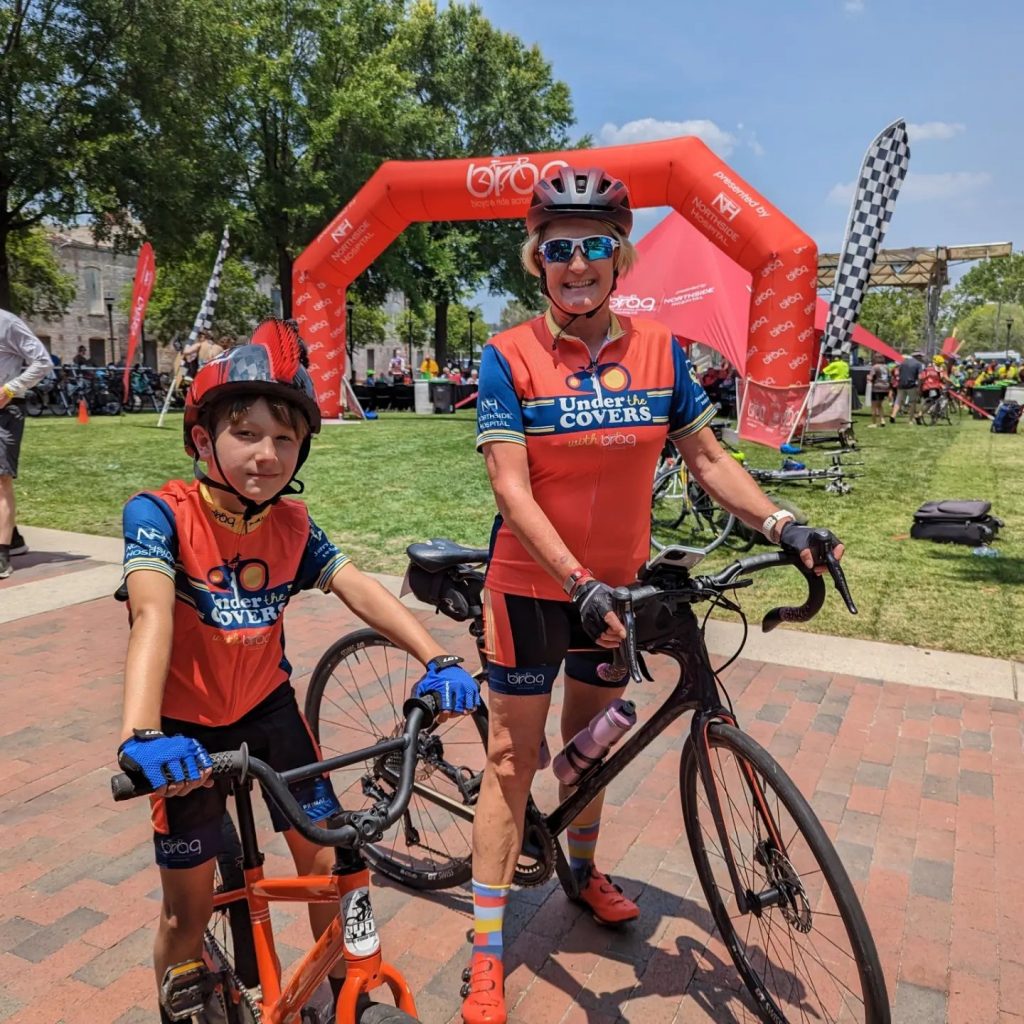
Young riders bring energy and enthusiasm, often staying up latest and being most adventurous in exploring towns. Middle-aged riders frequently form the social core, balancing energy with experience. Older riders contribute wisdom, perspective, and often the best stories—many are multi-year veterans who’ve cycled across Georgia numerous times and remember routes from decades past.
Families camping together create small domestic scenes within the larger camp—parents helping kids with evening routines, siblings playing frisbee or soccer, grandparents sharing wisdom with grandchildren. These family moments remind everyone that Big BRAG isn’t just for hardcore cyclists but genuinely welcomes all ages and abilities.
The mixing of generations happens naturally. Conversations at food trucks might include a college student, a middle-aged professional, and a retired teacher. Evening music attracts all ages. The shared experience of cycling across Georgia creates common ground that transcends age differences, and camp becomes a space where these connections flourish.
The Quiet Hours
Eventually, even the most social riders begin settling down. Musicians finish their last set. Food trucks close. Conversations grow quieter. The Café Campesino coffee bar packs up. Camp transitions toward sleep.
For outdoor campers, this means zipping into tents, arranging sleeping bags, perhaps reading by headlamp before lights out. The summer night sounds take over—crickets, distant conversations, sometimes a freight train rumbling through town, the rustle of tent fabric in gentle breezes.
Indoor campers in gymnasiums or auditoriums settle onto sleeping pads, the hard floor surprisingly comfortable after a day cycling. The echoing acoustics of these spaces create a unique atmosphere—quiet conversations carry, someone’s snoring might echo humorously, but generally a respectful quiet settles as people recognize everyone needs sleep for tomorrow’s miles.
Sleep comes quickly for most. The physical exertion ensures deep rest, and even riders who normally struggle with sleep find themselves drifting off easily. Your body has earned this rest, and it claims what it needs.
The Overnight Magic
Something special happens in camps overnight. You’re sleeping among hundreds or thousands of people, yet there’s profound peace. The shared experience creates safety and comfort—you’re not alone in some anonymous hotel but surrounded by community.
If you wake in the night, perhaps for a bathroom trip, camp reveals different beauty. Stars overhead if you’re camping outside. The sleeping forms of fellow riders. Volunteers still working quietly to prepare for morning. The Georgia night warm and welcoming.
There’s a timelessness to these moments. You could be at any point in BRAG’s 45-year history. The details change—better gear, smartphones replacing film cameras—but the essential experience remains constant. Cyclists sleeping under Georgia skies, tired from good miles, surrounded by friends and strangers who share your adventure.
Camp life continues as dawn approaches, but that’s another story—the ritual of waking, packing, preparing for the next day’s miles. For now, evening camp life has served its purpose for one more day.
Making Camp Your Own
The beauty of Big BRAG’s camp system is its flexibility. There’s no mandatory schedule after you arrive, no required activities, no pressure to participate in any particular way. You create your own evening based on what you need.
Feeling social? The music and food truck area awaits. Need quiet? Find a peaceful corner with your book. Want to explore? Catch the town shuttle. Craving connection with specific friends? Gather your people and create your own small community within the larger camp.
Some riders develop strong preferences over years of participating. They know exactly where they’ll camp—outdoor veterans who wouldn’t consider indoor options, or gymnasium loyalists who appreciate climate control. They know when they like to shower, which food trucks will have the best offerings, where to find the quietest spots for reading.
First-time riders might feel initially overwhelmed—so many choices, so many people, unfamiliar routines. But Big BRAG’s community welcomes newcomers, and veterans cheerfully share wisdom about camp life. Within a day or two, you’ve found your rhythm, discovered what works for you, and settled into patterns that make camp feel like home.
The Emotional Architecture
Beyond the physical logistics and social opportunities, camp life creates emotional experiences that make Big BRAG memorable. The satisfaction of completing a challenging day. The gratitude for host towns’ hospitality. The joy of shared laughter around food trucks. The peace of evening quiet as camp settles. The excitement of friendships deepening. The contentment of physical tiredness earned through meaningful effort.
These feeling accumulate throughout the week, layering onto each other, building toward something greater than any single day’s experience. By week’s end, camp life has woven itself into your identity—you’re not just someone who cycled across Georgia, but someone who lived this particular nomadic existence for a week, who embraced this unique lifestyle, who connected with this community.
Years later, when you remember Big BRAG, the individual miles might blur together. But camp life remains vivid—the particular spot you camped in that one town, the food truck conversation that turned into lasting friendship, the live band that played your favorite song, the sunset you watched from your tent, the laughter echoing across the gymnasium floor.
This is what camp life gives you: not just rest between cycling days, but experiences that justify the cycling itself. The miles are the price of admission to these evenings, to this community, to this particular way of moving through Georgia and connecting with its places and people.
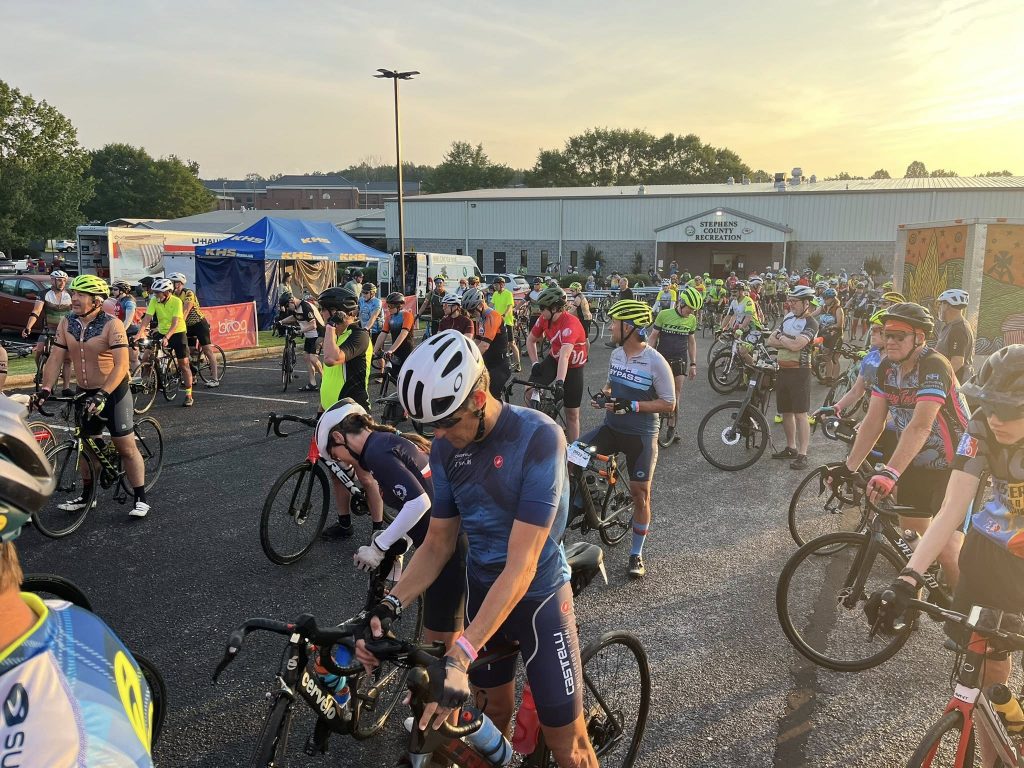
The Invitation
If you’ve never experienced Big BRAG camp life, it’s difficult to fully convey through words. You have to live it—arrive tired after a long day, feel the relief of finding your luggage, make the choices about how to spend your evening, feel the community coalescing around food and music, watch Georgia’s sky transition from day to night, and finally settle into sleep surrounded by fellow adventurers.
It’s simultaneously simple and profound, ordinary and extraordinary. It’s just camping, just eating from food trucks, just listening to local bands. But it’s also community formation, cultural immersion, personal restoration, and meaningful human connection happening in real-time across dozens of Georgia towns throughout one magical week each summer.
The camps will be set up, the luggage trucks will deliver your gear, Café Campesino will brew the coffee, the food trucks will serve dinner, the bands will play, and the towns will welcome you. All that’s missing is you—ready to clip out after a good day’s ride, find your luggage, and discover what version of camp life calls to you that particular evening.
Big BRAG runs May 30 through June 6, 2026—one week, over 400 miles on bike across Georgia. The miles will challenge you, but camp life will restore you. And by week’s end, you’ll understand why so many riders return year after year, drawn not just by the cycling but by everything that happens when you finally arrive at camp, tired and satisfied, ready for whatever the evening brings.
Learn more and register at brag.org/brag/. Camp life is waiting!
